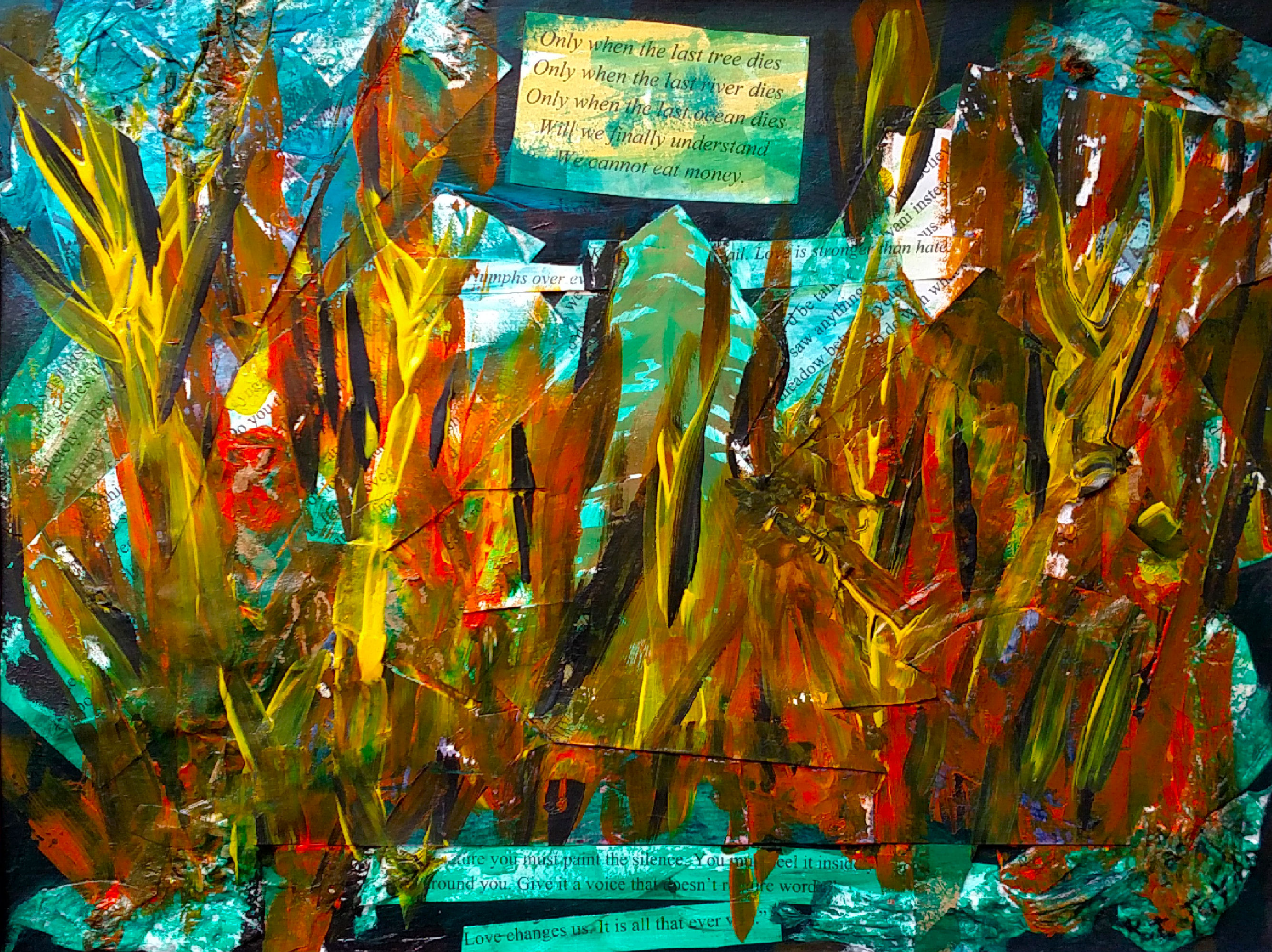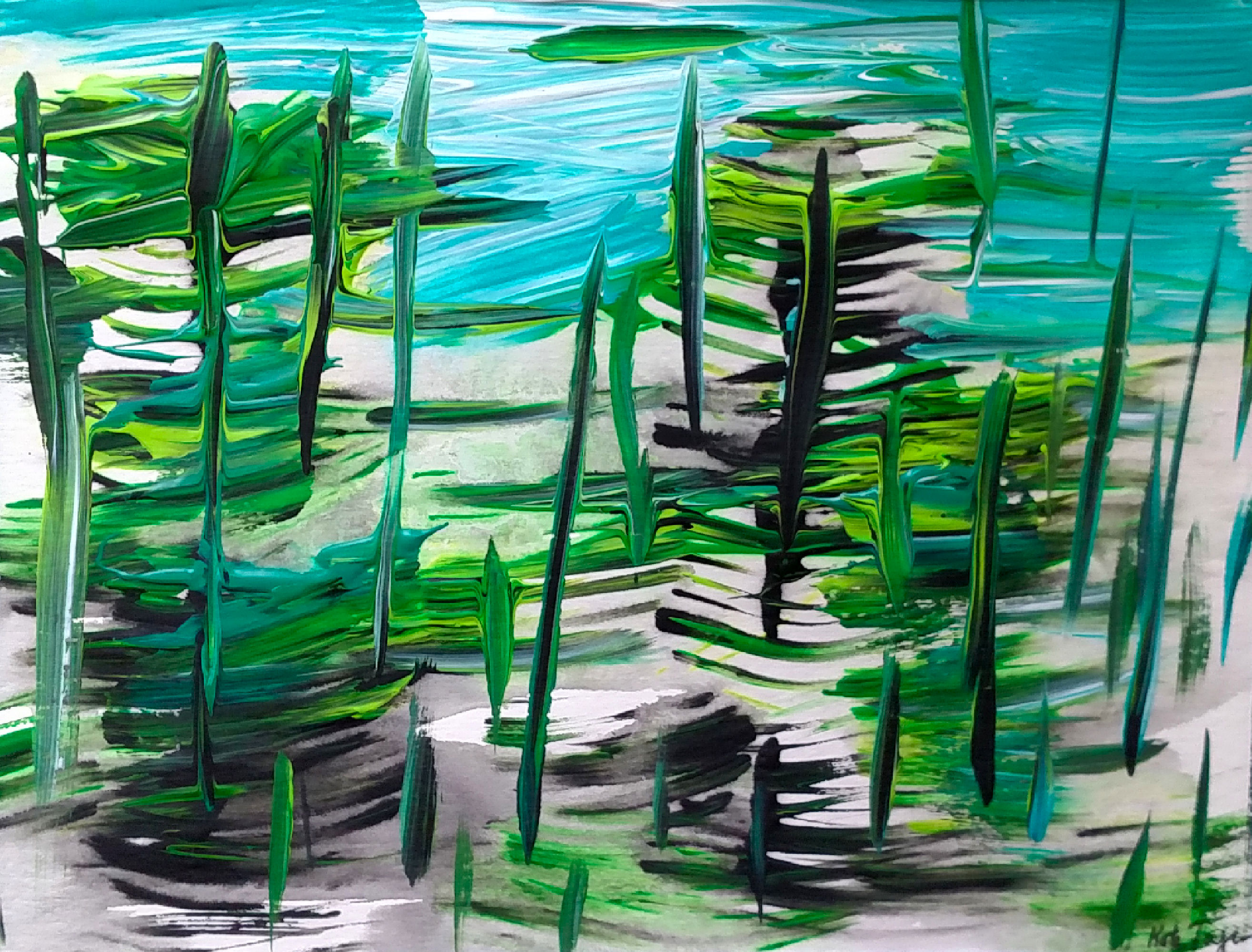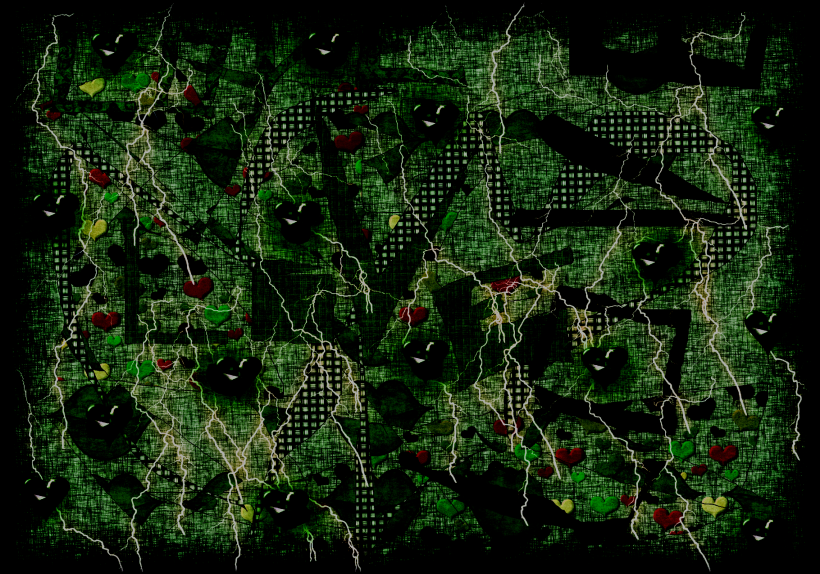I created this series of paintings as a warning about the danger facing our planet. Or rather, the planet and ourselves because we can’t detach ourselves from nature. We are the earth and the earth needs us. The damage we do affects everything and unless we wake up and put an end to out of control corporate greed. And it would serve us well to remember we need the earth far more than the earth needs us.

DEATH OF THE PLANET II
11×14
acrylic on canvas panel
The destruction of our planet means our destruction as well. It’s time to pay attention, to make noise, to use what we have to draw attention to this disaster shaped by greed and willful ignorance of science. Wildfires that destroy entire forests are normal now. Droughts are normal now. Skies filled with smoke and other pollutants is normal now. That’s why I painted this dark warning of a burning forest. The flames and the smoke and the charred trees are abstract expressions because I want people to feel what it’s like to lose an entire forest. I want people to wake up.
This painting is available for purchase on a print on paper, a print on canvas, or you can also purchase the original painting.

A lit match is surrounded by clocks set to different doomsday times. Greed. Warm. Hot. Dead. I painted it in watercolor because I wanted to show the effects of the rising oceans due to climate change. There are vague figures fainting painted into the image that represent the voices that tried to warn but weren’t heard.
This painting is available for purchase on a print on paper, a print on canvas, or you can also purchase the original painting.
watercolor and ink on paper, environment, nature, global warming, climate change, political art, rising oceans, blue, doomsday clocks, lit match, black, abstract nature

11×14
mixed media on paper
I cut out pieces of a misprinted version of my novel “When The Last River Dies” and used it to create the mountains and rivers in the background. I also used bits of paper towel that were used to clean brushes. I used watercolors to show the rising sea levels, and acrylic paint for the flames that are caused by drought and global warming. I wanted to show how ordinary things we discard are part of the damage we are doing to our planet. We can’t keep living as though a life of disposable goods will not cost us dearly in the end.
Keywords
mixed media on paper, environment, nature, global warming, climate change, political art, rising oceans, paper from recycled novel, disposable, flames, black, abstract nature
This painting is available for purchase on a print on paper, a print on canvas, or you can also purchase the original painting.

DEATH OF THE PLANET V
11×14
watercolor and acrylic on paper
I wanted stark hills stripped of all growth and dead trees with only their charred trunks left standing to show the results of our neglect and abuse of the planet. Our precious forests are burning away in wildfires that have become seasonal instead of rare. The oceans are rising and flooding is destroying habitats that once provided food for species other than ourselves.
watercolor and acrylic on paper, environment, nature, global warming, climate change, political art, charred tree trunks, blue sky, bare hills, flames, black, abstract nature
This painting is available for purchase on a print on paper, a print on canvas, or you can also purchase the original painting.

DEATH OF THE PLANET VI
11×14
watercolor and acrylic on paper
Rising sea levels will devastate everything from coastal forests to farm lands. I used watercolors over the acrylic trees to depict them drowning and dying from the flooding caused by global warming and climate change. This is not some dire future warning. It is the present and if we don’t act now, future generations will never know what it was like to sit in the silence of a thickly forested hillside overlooking the ocean. We can’t let greed and indifference define the future. It is my hope that art will reach those who can’t see or hear the warnings any other way.
watercolor and acrylic on paper, environment, nature, global warming, climate change, political art, rising sea levels, blue, green, water, black, abstract nature
This painting is available for purchase on a print on paper, a print on canvas, or you can also purchase the original painting.








